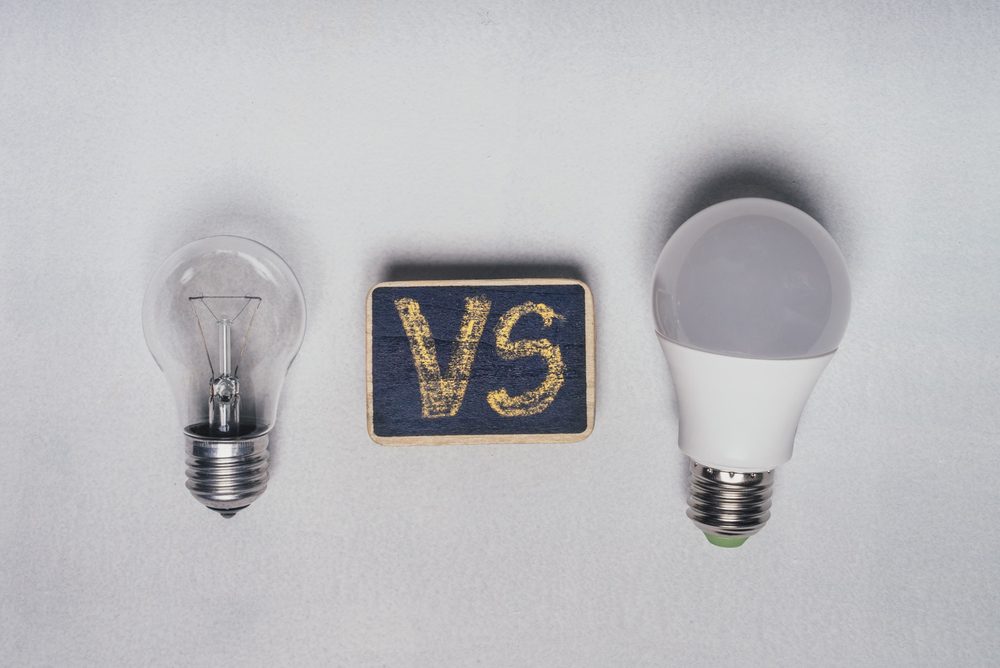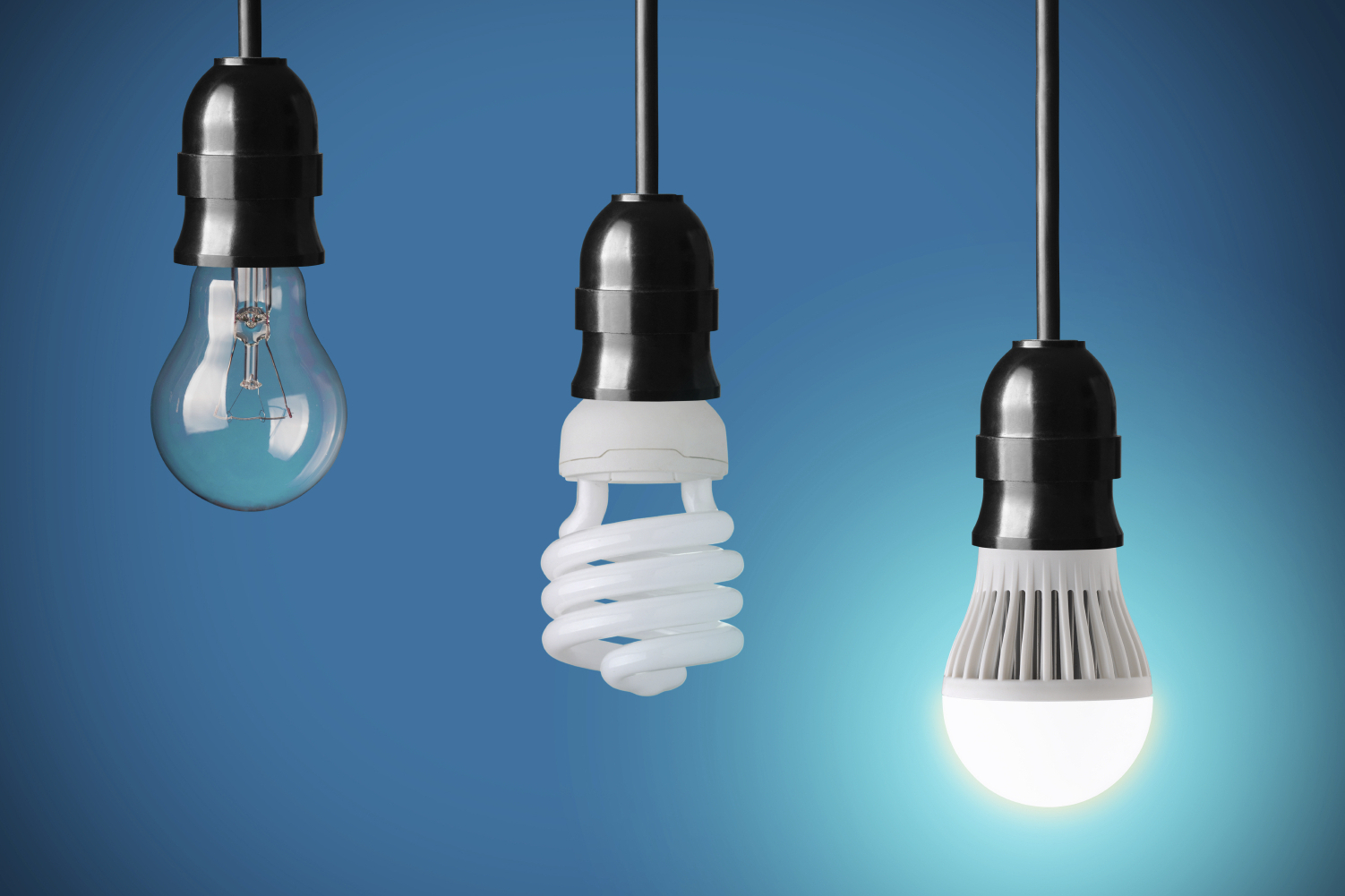Lighting technology has significantly evolved over the years, with LED bulbs becoming a popular alternative to traditional incandescent bulbs. Understanding the differences between LED bulbs and normal bulbs can help in making an informed decision regarding energy efficiency, cost, and environmental impact.
This article provides a detailed comparison of LED bulbs and normal bulbs based on various parameters such as lifespan, power consumption, brightness, heat emission, and cost-effectiveness.

What is an LED Bulb?
An LED (Light Emitting Diode) bulb is a modern lighting solution that uses semiconductor technology to produce light efficiently. Unlike traditional incandescent or CFL bulbs, LED bulbs consume significantly less energy while providing brighter illumination. They generate light by passing an electric current through a microchip, which lights up tiny diodes inside the bulb. LED bulbs are long-lasting, durable, and environmentally friendly, as they emit less heat and contain no harmful substances like mercury. Available in various shapes, sizes, and color temperatures, LED bulbs are widely used in homes, offices, and industrial spaces, making them a preferred choice for energy-efficient lighting.
Features of LED Bulbs
-
Energy-efficient
-
Long lifespan
-
Low heat emission
-
Environmentally friendly
-
Available in various color temperatures
What is a Normal Bulb?
A normal bulb, commonly referred to as an incandescent bulb, is a traditional lighting device that produces light by heating a thin filament inside a glass bulb. When electricity passes through the filament, it heats up to a high temperature and glows, emitting light. These bulbs are simple in design and have been widely used for decades. However, they are less energy-efficient compared to modern alternatives like LED and CFL bulbs because a large portion of the energy is lost as heat. Despite their short lifespan and high energy consumption, incandescent bulbs are still used in some applications due to their warm, natural light and low initial cost.
Features of Normal Bulbs
-
High energy consumption
-
Short lifespan
-
Emits more heat
-
Lower initial cost
-
Produces warm light
Key Differences Between LED Bulb and Normal Bulb
Below is a detailed comparison between LED bulbs and normal bulbs based on essential factors:
|
Feature |
LED Bulb |
Normal Bulb (Incandescent) |
|---|---|---|
|
Lifespan |
25,000 - 50,000 hours |
1,000 - 2,000 hours |
|
Energy Efficiency |
Consumes 80% less power |
High energy consumption |
|
Brightness (Lumens per Watt) |
80-100 lm/W |
10-17 lm/W |
|
Heat Emission |
Low |
High |
|
Cost |
Higher initial cost |
Lower initial cost |
|
Maintenance |
Low |
High |
|
Environmental Impact |
Eco-friendly |
Contains harmful materials |
|
Warm-up Time |
Instant |
Requires warm-up time |
|
Color Options |
Multiple color temperatures |
Limited to warm white |
Advantages of LED Bulbs
1. Energy Efficiency
LED bulbs consume significantly less energy compared to normal bulbs, making them cost-effective in the long run.
2. Long Lifespan
With a lifespan of up to 50,000 hours, LED bulbs require fewer replacements, reducing maintenance costs.
3. Environmentally Friendly
LED bulbs do not contain harmful chemicals like mercury, making them safer for the environment.
4. Low Heat Emission
LEDs remain cool to the touch and do not heat up the surroundings, making them ideal for prolonged use.
5. Instant Brightness
Unlike incandescent bulbs that take time to warm up, LED bulbs achieve full brightness immediately after being switched on.
Disadvantages of LED Bulbs
-
Higher initial cost compared to normal bulbs
-
Sensitive to high voltage fluctuations
-
Some cheaper models may produce blue light that can affect sleep patterns
Advantages of Normal Bulbs
1. Low Initial Cost
Incandescent bulbs are more affordable at the time of purchase, making them accessible to all consumers.
2. Warm Light
These bulbs provide a warm, pleasant glow, making them suitable for cozy environments.
3. Dimmable Without Additional Hardware
Incandescent bulbs work well with traditional dimmers without needing special compatibility features.
Disadvantages of Normal Bulbs
-
High Energy Consumption: Inefficient in converting electricity into light
-
Short Lifespan: Frequent replacements needed
-
Excessive Heat Emission: Can contribute to increased room temperature
-
Not Eco-Friendly: Contains harmful substances and contributes to higher carbon emissions
Which One Should You Choose?
Choosing between an LED bulb and a normal bulb depends on the following factors:
Choose LED Bulbs If:
✔ You want long-term cost savings and energy efficiency
✔ You prefer a cooler, eco-friendly lighting solution
✔ You need a bulb with a longer lifespan
✔ You require multiple color options and brightness levels
Choose Normal Bulbs If:
✔ You need an affordable lighting option for short-term use
✔ You prefer a warm, natural glow
✔ You are using dimmable lighting without specialized dimmers
LED bulbs have revolutionized the lighting industry with their superior energy efficiency, longevity, and environmental benefits. While normal bulbs may still be in use due to their affordability, they are gradually being replaced by LEDs as technology advances.
Investing in LED bulbs is a cost-effective and sustainable choice, leading to significant energy savings and reduced environmental impact.

FAQs
1. Do LED bulbs last longer than normal bulbs?
A. Yes, LED bulbs can last up to 50,000 hours, while normal bulbs typically last only around 1,000-2,000 hours.
2. Are LED bulbs expensive?
A. Although LED bulbs have a higher initial cost, they save money in the long run due to lower energy consumption and reduced maintenance costs.
3. Do LED bulbs get hot?
A. No, LED bulbs produce minimal heat compared to incandescent bulbs, which generate excessive heat during operation.
4. Can LED bulbs be used in any fixture?
A. Yes, LED bulbs are available in various shapes and sizes, making them compatible with most fixtures.
5. Are LED bulbs better for the environment?
A. Yes, LED bulbs consume less energy and do not contain harmful chemicals, making them an eco-friendly option.





.gif)















Sign in
to continue to ilmkidunya.com